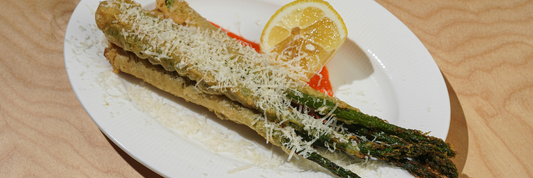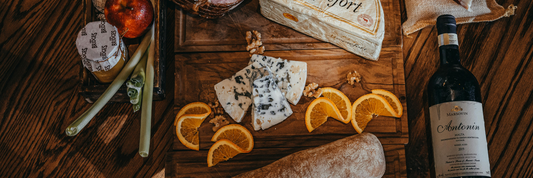Running a successful bakery means much more than perfect recipes, it also means navigating tight margins, staff shortages, changing customers, and sustainable packaging. In this post, we highlight the top 10 challenges bakery owners face, and provide actionable solutions so you can stay resilient.
You’ll learn how to tackle cost pressures, staffing issues, supply chain disruptions, quality control, and more plus tips tailored for Canadian and U.S. bakery businesses. And yes, we’ll show how KimEcopak’s eco packaging fits into your toolkit. Let’s jump right in.
- How Can Coffee Shop Face with Labor Shortage?
- 5 Common Bakery Packaging Mistakes and How to Fix Them
Rising Ingredient & Input Costs

Challenge: Inflationary pressures and volatile commodity markets
In recent years, ingredient costs for flour, sugar, dairy, and specialty flours have seen wide fluctuations due to global supply chain disruptions and inflation. Canadian bakeries also feel added pressure from import tariffs and transportation cost increases. A small bakery working on slim margins may find that a 5–10 % cost hike erodes profitability significantly.
Solutions: Strategies to mitigate cost increases
- Negotiate longer-term contracts with reliable suppliers to lock in prices, especially for high-volume staples.
- Buy in bulk for your highest-use ingredients and store them properly to avoid spoilage.
- Local sourcing & substitutions: consider nearby mills, local butter/dairy, or alternative grains when possible.
- Recipe optimization & yield control: track your yields, reduce overages, and standardize portioning.
- Communicate value to customers: where possible, shift to higher-margin items (artisan, specialty, dietary niches) so the cost increases are more tolerable.
Supply Chain Disruptions & Logistics
Challenge: Port strikes, shipping delays & ingredient bottlenecks
From port slowdowns to freight capacity constraints, bakeries often experience delays or partial shipments. Even your packaging supplier (say for boxes or bags) may be affected, jeopardizing your on-time delivery or takeout operations.
Solutions: Building supply chain resilience
- Diversify your supplier base (local, regional, import) so you aren’t solely reliant on one.
- Maintain a safety stock buffer for critical ingredients and packaging.
- Monitor logistics trends (carrier capacity, port congestion) so you can preempt delays.
- Alternate domestic sources when imports are disrupted.
- For packaging, rely on stable suppliers: you might, for example, stock eco-friendly kraft boxes from KimEcopak’s Kraft Packaging collection as a more reliable supply.
Labor Shortages & Staffing

Challenge: Recruiting, retention, and training challenges
Many bakery owners struggle to attract and keep skilled bakers, helpers, and packaging/fulfillment staff. High turnover, burnout, and competition from sectors with fewer physical demands make this a chronic issue.
Solutions: Building a stable workforce
- Offer competitive wages, benefits, and scheduling flexibility (e.g. split shifts, shorter shifts).
- Provide ongoing training and cross-training so staff can shift roles or grow their skills.
- Recognize and reward achievements, solicit feedback, and build a positive culture.
- Automate repetitive tasks (packaging, bagging) to lighten manual burden.
- Build relationships with culinary schools or trade programs for talent pipelines.
Quality & Consistency Control
Challenge: Variability in output
Poor consistency in texture, rise, crumb, or appearance can erode brand reputation. Variables such as humidity, ingredient variability, and staff technique can sabotage consistency.
Solutions: Systems for consistency
- Create Standard Operating Procedures (SOPs) for each product (timings, temperatures, hydration).
- Maintain batch logs with observations (humidity, oven behavior).
- Use calibrated instruments (scales, thermometers, timers) rather than estimating.
- Introduce semi-automated equipment (dough mixers with timers, dividing machines) to reduce operator error.
- Regularly revisit your recipes and tweak for robustness.
Food Safety, Regulation & Compliance
Challenge: Health inspections, allergen control, labeling
Bakeries must maintain proper hygiene, allergen controls, and labeling standards. Mistakes can lead to fines, recalls, or worse a loss of trust in your local community.
Solutions: Maintaining compliance
- Implement a formal food safety plan (HACCP or equivalent).
- Train staff thoroughly in cleaning, cross-contamination, allergen protocols.
- Label all packaged goods clearly (ingredients, allergens).
- Perform internal audits and welcome mock inspections.
- Stay current with provincial/state and federal regulations in your region.
Seasonality & Demand Fluctuations
Challenge: Peaks and troughs in baking demand
Demand for baked goods often surges during holidays (Christmas, Easter), celebrations, or local events. Conversely, off-peak months can leave you underutilized.
Solutions: Planning for seasonality
- Use historical sales data and forecasting to plan capacity and staffing.
- Develop seasonal product lines (holiday loaves, themed cookies).
- Diversify with other revenue streams (coffee, sandwiches, retail packaged baked goods).
- Adjust staffing levels with seasonal hires.
- Run promotions or bundle deals in slow periods to stimulate sales.
Combine bakery goods with takeaway beverages in compostable coffee cups for higher average orders.
Marketing, Branding & Customer Acquisition

Challenge: Differentiation in a crowded space
Many bakeries compete on price or generic products. To thrive, you must stand out with compelling branding, unique products, and community presence.
Solutions: Effective marketing strategies
- Craft a brand story (local, artisan, zero-waste) that resonates with your audience.
- Use social media (Instagram, TikTok) to show off your process, finished goods, behind-the-scenes.
- Partner with local cafés, markets, events to sample or co-sell products.
- Consider a subscription or loyalty box pre-paid baked goods delivered weekly or monthly.
- Use SEO content (blog posts, recipe content) and internally link to your core packaging/product pages
- Encourage customers to post their treats with tags and shareable hashtags.
Waste, Spoilage & Inventory Loss
Challenge: Perishable ingredients and finished goods
Overproduction leads to waste; underproduction loses sales. Balance is tricky, especially for items with short shelf life.
Solutions: Strategies to reduce waste
- Use smart forecasting + buffer, not constant overbaking.
- Offer discounts or flash sales near closing to move items.
- Repurpose or compost unsold goods (e.g. day-old bread turned into staff perks or breadcrumbs).
- Use packaging that extends shelf life (e.g. moisture-managing or breathable materials)
- Track waste metrics (yield, spoilage) and adjust your production.
Scaling & Capital Investment
Challenge: When and how to scale
Adds capacity too soon or without infrastructure support can lead to chaos. Too slow, you lose market momentum.
Solutions: Smart scaling decisions
- Scale incrementally rather than all-in at once.
- Lease or finance major equipment, rather than paying full cost.
- Use modular systems that grow with you.
- Pilot new items or packaging in small runs before full rollout.
- Explore small-business or government grants in Canada/U.S. for food businesses.
- Test new sustainable packaging with KimEcopak before full adoption to minimize risk.
Maintaining Sustainability & Eco-Consciousness
Challenge: Consumer demand for green packaging
As consumers become more eco-conscious, they expect your packaging to reflect that. Failing to meet that can damage your reputation.
Solutions: Balancing eco goals with business realism
- Use reliable compostable, recyclable, or biodegradable packaging from trusted sources. For instance, check out their compostable coffee cups blog to understand options.
- Clearly communicate your sustainability story: how your packaging reduces waste, how customers should dispose.
- Quantify impact (e.g. “we saved X kg of plastic this year”).
- Optimize packaging design to reduce materials.
- Educate staff and customers on proper disposal.
FAQ about Challenges Bakery Owners Face

Q: What is the biggest challenge bakery owners face?
A: Many owners point to ingredient cost volatility and staffing shortages as their most persistent challenges, especially when margins are tight.
Q: How can a small bakery compete with a large industrial bakery?
A: Focus on differentiation artisan recipes, niche or dietary items, local identity, and personal touch. Big players can’t flex into your specialty or community presence.
Q: Is sustainable packaging too expensive for bakeries?
A: Initially, yes, but with volume, supply partnerships, and customer willingness to pay for eco-differentiation, it becomes viable. Suppliers like KimEcopak support this transition.
Q: How can bakeries reduce waste?
A: Through precise forecasting, discounted sales near expiry, composting or repurposing, and tracking yield metrics to continuously improve.
Conclusion
Running a bakery today means balancing creativity, cost control, and sustainability. Each challenge from ingredient costs to staffing and packaging has a practical solution when approached with planning, innovation, and consistency.
The most resilient bakeries are those that stay adaptable, invest in their people, and continuously improve their operations. When you focus on quality, efficiency, and purpose, your business doesn’t just survive, it thrives.
-
LEARN MORE about How "Subscribe for a Happy Life" will benefits your business HERE!
-
LEARN MORE about Kim Vu, sharing on the challenges she faced as a former restaurant owner, and how she overcame them to create KimEcopak HERE!




